#deploy node js application
Explore tagged Tumblr posts
Text
Master Google Cloud: Deploying Node JS APIs on VM
Full Video Link - https://youtu.be/gxZ-iJNCbAM Check out this new video on the CodeOneDigest YouTube channel! Learn how to create Virtual Machine in Google Cloud Platform, Setup Google Compute Engine VM & Deploy run JS APIs in VM. #codeonedigest
In this tutorial, we will create & setup Google Compute Engine Virtual Machine in Google Cloud Platform. We will be deploying & running javascript APIs in google compute engine virtual machine. We will be opening firewall port for incoming API request in VM. We will also learn how to deploy API code and run API service in google compute engine virtual machine. I will provide step by step guide to…

View On WordPress
#compute engine#deploy api for free#deploy api in google cloud#deploy node js api#deploy node js api for free#deploy node js application#deploy node js project on server#gcp compute engine interview questions#gcp google cloud platform#google cloud creating a virtual machine#google cloud platform#google cloud platform tutorial#google compute engine#virtual machine setup
0 notes
Text
Hiring Solana Developers 101: A Beginner’s Guide
As blockchain adoption progresses rapidly, high-performance platforms like Solana are presently being explored by enterprises to be the infrastructure for their decentralized applications. Considered to be fast, Solana is attractive for developers and entrepreneurs due to its high speed and low fee structure. With that said, development on Solana would require certain special expertise, and hence knowing where and how to Hire Solana developers becomes an important factor for success in your project. Whether it's a DeFi platform, NFT marketplace, or a Web3 tool, this guide is an easy way to sail through with the confidence to conduct the whole hiring process.

Why Solana? A Quick Overview
Solana stands apart in the ecosystem due to its scalability and efficiency. Where other chains struggle with congestion and high gas fees, Solana can manage more than 65,000 transactions per second with the introduction of Proof of History (PoH) and Sea Level, a parallel execution engine. This brings about the best environment for real-time applications, gaming, financial protocols, and high-volume NFT drops.
Further, Solana enjoys a secured and rapidly growing ecosystem, unlike other chains. Projects like Magic Eden, Phantom Wallet, and Marinade Finance truly demonstrate its potential. Hence, knowledge of factors such as the usage of Rust or C and an understanding of Solana's very different runtime environment will greatly enhance your hiring abilities to find developers that will take full advantage of these benefits.
When Do You Need a Solana Developer?
Hiring a Solana developer becomes extremely essential when the use case requires decentralized logic or blockchain-based storage. A few of the occasions when hiring a Solana developer becomes wise are:
Identifying a dApp: Be it a game, a financial tool, or something else, any application decentralized on Solana needs a developer who is an expert in smart contract design.
NFT Projects: Developers can help you build, mint, and operate NFTs and marketplaces that run natively on Solana.
DeFi Protocols: From staking contracts to liquidity pools, you'll need specialists to write and deploy secure contracts for finance.
Data-Oriented Applications: Developers can build an analytics dashboard or an analytics tool that interacts with Solana nodes and RPC endpoints.
Porting from Ethereum: When moving an already existing app to Solana for lower fees, skilled developers will be the ones to tackle all compatibility and performance adjustments.
Top Skills to Look For in Solana Developers
Getting somebody who just "knows blockchain" is just not enough; for development on the Solana network, you will have to hire a developer with the following skill set:
Rust Programming Proficiency: Solana smart contracts, called on-chain programs, are mostly written in Rust, which poses a steep learning curve but offers the best performance and safety. The developer should profess knowledge of practical experience with the language.
Anchor Framework Proficiency: Anchor framework eases development by providing macros and eliminating boilerplate code, thus accelerating dApp delivery. A developer experienced with Anchor works faster and writes much cleaner, testable code.
Frontend and Wallet Integration: Expertise in linking Solana smart contracts to frontend apps through JavaScript or TypeScript libraries (e.g., Solana Web3.js) is essential. Integration with wallets such as Phantom, Solflare, or Backpack will also be needed for genuine test uses.
Security Best Practices: With hacking and exploits happening so frequently in Web3, it is critical that your developer know how to audit, write secure logic, and utilize tools such as Solana Playground or Devnet for safe testing.
Solana Dev Tools: Knowledge of CLI tools, explorer APIs, RPC calls, test validators leads to easier development and debugging.
Where to Find Solana Developers
Finding the appropriate developer is always a task; with a strategic approach, you can reach out to either individuals or teams that are truly talented. Here lies where to begin your search:
Freelance Platforms: Sites like Upwork, Toptal, and Fiverr Pro are places to find developers who may have Solana experience. Look for profiles that are verified; portfolios and reviews of clients are also important.
Community Hubs: Join the official Solana Discord, look for active developers on GitHub, and take part in discussions on Stack Overflow, Solana Stack Exchange, or Reddit r/solana.
Web3 Job Boards: Such niche sites as CryptoJobs, Web3.career, and Remote3 let you post jobs and connect with developers who are into blockchain tech already.
Hackathons & Meetups: Solana hosts almost yearly hackathons that top emerging talent tends to flock to. You could scout developers that have won or placed through these competitions.
Development Agencies: If you are running on time, partner with a Solana-focused agency that will provide full-stack dApps, project managers, and comprehensive QA support.
How to Evaluate and Interview Candidates
Inappropriate hiring and selection may lead to delays and low-quality code, or in some cases, security vulnerabilities. Here's how to screen top Solana talent:
Look at Their Portfolio: Request work done previously using Solana or dApps. Look for live demos, GitHub repositories, deployment of smart contracts on Mainnet or Devnet.
Technical Fit: Questions may concern Solana architecture, handling of state changes, cross-program invocations (CPIs), and optimizations for rent and compute units.
Give Them a Mini Project or Coding Assignment: Small tasks such as creating a simple token, setting up an SPL wallet, or coding a staking contract can be considered. In addition to code quality, evaluate their approach to solving problems.
Communication Skills Test: Working remotely? Documenting work done, reporting bugs, and collaborating using Git, Slack, or Notion tools require as much importance as technical skills.
Common Hiring Models
The hiring model has advantages and disadvantages that apply depending on how complex your project is, how megabucks you intend to budget, and how long you've got for working out a timetable for production itself. Here is a quick breakdown:
Freelancer: Use one for a short piece of work or MVP development. Flexibility and cost are in their favor, but the downside is that freelance contractors are not willing to commit forever.
Inhouse Developers: They stand ideally prepared for startups and growing companies with a continuous blockchain need. They also get involved in your product strategy.
Agencies or Dev Shops: These tend to suit non-technical founders or companies needing full-scale development. Design, QA, project management, and maintenance might also be part of the package.
Look at what you want to achieve, and pick the one suited for your development roadmap and operational needs.
Conclusion
Solana is one of the most scalable and least expensive blockchains in the world, hence an ideal choice for developers of demanding Web3 applications. Because of the complexity of the environment, one does not just need any generalist developer but a developer versed with Solana's unique architecture and tools and its best practices.
If you want to develop a commercially viable dApp or ramp up an NFT platform, devoting the right talent is of essence. So, at the end of this guide, you will know how to fairly evaluate skills, vet candidates, and ultimately Hire professional Solana Developers who can swiftly convert your vision from concept to reality with speed, security, and scalability.
0 notes
Text
Modern Custom Web App Development Services

Today’s digital era requires tailored solutions for companies to remain agile, competitive, and human-centric. Packaged software sometimes does not make a good fit with particular operations requirements or with the user experience. This is where custom web app development comes in.
Intelligent Scalable High Performance Web Apps At Appnox Technologies, we create intelligent, scalable, and high performing web applications that are tailored to help you meet your goals. Whether you’re baby stepping your way into the market or a seasoned enterprise looking to streamline internal processes, our bespoke solutions allow you to break new ground, improve productivity, and enhance the digital experience for you and your users.
What Is Custom Web Application Development?
A custom web application is a unique or custom-built software application that is designed to cater the exclusive needs, processes, and challenges of a certain business or organization.
Goals of a Custom Web Application:
Offer an incredibly customized and efficient digital product
Improve business systems and processes
Encourage innovation in the enterprise
Provide a competitive edge in the marketplace
Top Benefits of Custom Web Application Development
Customized for Your Company
Your custom app is designed based on your unique requirements. If you need to connect to a particular CRM, automate your supply chain, or comply with user-specific workflows, you get exactly the solution you require.
High Scalability
Our products are designed for scalability. Your web app can scale with your user base or feature set without the need to sacrifice performance.
Seamless Integrations
Want to connect to a third-party tool such as a payments gateway, an analytics platform or an API? With a custom solution, you can do pretty much whatever the hell you want to add—and how it works—ability.
Enhanced Security
Tailor-made apps are designed with strong security measures in mind for your unique business structure. You sidestep typical exploits its off-the-shelf counterparts and have a peace of mind that your privacy is upheld.
Our Custom Web Application Development Services
Appnox Technologies is a professional web application development company that provides end-to-end web development services and we do full cycle back end and front end application development. Our services include:
Custom Web App Design & DevelopmentPowerful backend combined with user orientated designs to develop responsive and interactive applications.
Enterprise Web SolutionsScaling enterprise applications to automate and optimize intricate business processes.
SaaS Application DevelopmentDeveloped strong, subscription-based web platforms for both startups and established software businesses.
Progressive Web Apps (PWAs)On-demand, app-like experiences with offline support and performance on the web.
API Development & Integration Building custom APIs or using third-party services to enhance functionality and connectivity.
Ongoing Maintenance & SupportMaintaining your web application to be the fastest, most secure and modern it can be, now and forever.
Appnox’s Custom Web App Development Process
Our apps are built to scale with your business. As your needs grow, we can easily enhance existing features or add new ones to support your expansion.
Requirement Analysis We collect and evaluate business objectives, technological requirements and end user requirements.
UI/UX DesignYour designers develop user friendly, mobile friendly interfaces to improve interaction.
Custom DevelopmentLeveraging modern frameworks such as React, Node. js, Vue. js, and Laravel, and together they’ll help turn your vision into a long-lasting success.
Testing & QAWe test things — performance, security, usability — to ensure you get a mostly bug-free, stable product.
Deployment & ScalingWe deploy to your cloud (Aws/Azure/GCP) of choice with full CI/CD pipelines for easy going live.
Ongoing SupportAfter we launch, we will continue to maintain, monitor, and add features to your app.
Industries We Serve
Our customized web app development solutions are used by:
Healthcare – Patient Portal, Appointment Scheduling System, Health Dashboard
Fintech – Platforms to execute transaction s, tracking and investment and risk analytics tout etc.
eCommerce – Custom shopping carts, product management systems, and vendor marketplaces
Travel & Logistics – Booking engines, routing and Real-time Tracking Solutions
Education – LMS, online exam software and e-learning platforms
Real Estate – Listing apps, Property Management CRM tools, virtual tour integrations etc.
Why Choose Appnox Technologies?
Selecting the best vendor for your custom web application, is one of the key decisions to make. And this is why we’re unique at Appnox Technologies:
✔ Deep Technical Expertise
Our team is proficient in cutting-edge web technologies such as React, Angular, Laravel, Node. js, and more. We develop solid, secure, scalable applications with the best methodologies in mind.
✔ Full-Cycle Development
We do everything from strategy and design to development, deployment, and support. You end up with a one-stop shop service provider you can trust.
✔ Industry-Specific Solutions
We know the challenges of the industry and build apps that solve real problems—faster and more effectively.
✔ Agile & Transparent Process
We keep you informed at every turn. Support You Because with weekly check ins, demos and feedback you’re always in the loop.
Frequently Asked Questions (FAQs)
Q1: How long does it take to develop a custom web application?
The time for development will correlate with what features and integrations and scope of work you may need. A simple custom app might take 2–3 months; complex enterprise solutions can take 4–6 months or more.
Q2: How much does custom web application development cost?
Pricing depends on functionality, tech stack, and integrations. Price We at Appnox provide cheap price models to suit your budget and needs. Contact us for a free estimate.
Q3: Will my custom web application work on mobile devices?
Yes. All of our software is responsive designed, allowing it to function the same on any desktop, tablet or mobile device.
Q4: Can I upgrade or scale the app later?
Absolutely. Our apps are engineered for scale. As your business scales up, we can simply increase or add features to the app.
1 note
·
View note
Text
Ambientech Softwares App Development Company In India & USA.
Ambientech Softwares Several sources have highlighted the importance of using as an App Development Company firm in India USA.

Expertise in Mobile and Web Development: Experienced in both Mobile and Web Development, Ambientech is a mobile application developer that also provides web development and design services. Their expertise lies in creating custom software solutions that meet client requirements, making them a top choice. Having offices in India, the USA, UK, UAE, and Australia, Ambientech has gained a global reputation. What makes it special? Providing solutions for clients in various sectors such as IT, medicine and technology platforms. Their versatility and dependability are noteworthy.
Global Presence and Industry Recognition: Highly experienced, creative and innovative team of developers and designers. The implementation of Kubernetes, Docker, and serverless functions enables the Development of future-ready applications with clean, high quality code. This is achieved through their use of cutting-edge technologies.
Client-Centric Approach: The importance of understanding client requirements, creating mockups, prototypes and clear documentation is why Ambientech prioritizes a "client-centric approach.". Clients can rely on them to do their jobs well within their timeframe and budget.
Timely Delivery and Cost-Effectiveness: Competitive pricing: Ambientech's services are affordable and provide excellent solutions for startups and enterprises, with services priced at just $30/hour. They are both cost-effective, but also offer interactive and scalable solutions that add value to clients.
Innovative and High-Quality Solutions: A proven Development Process: Their approach involves reviewing requirements, Designing prototypes and deploying experienced teams to deliver projects with accuracy. Error-free systems are made more reliable by the multiple stages of testing.

Experienced Team and Full-Stack Capabilities: Ambientech employs Swift, React JS, and Node JS to deliver applications that are tailored to specific industries like finance, healthcare, real estate, or event booking, meeting the demands of those industries.
Commitment to Support and Maintenance: Commitment to Quality and Support: They deliver pixel-perfect designs, flawless UX, and post launch live support. They have a culture of doing what needs to be done, creative and professional that results in happy customers.
Some sources suggest that Ambientech's strengths are not as evident in practice, given their recent launch (2020) and lack of public feedback or portfolio visibility. Even though they are a newcomer to India's app development scene, their global presence, technical prowess, and commitment to satisfying customers make them renowned.
#AppDevelopment#AppDevelopmentCompany#MobileAppDevelopment#iOSDevelopment#AndroidDevelopment#CrossPlatformApps
0 notes
Text
Full Stack Developer Course Kochi – Become a Versatile Developer with Techmindz
In today’s digital age, full-stack development has become one of the most sought-after skills in the tech industry. Full-stack developers are capable of building both the front-end and back-end of web applications, making them invaluable in today’s fast-paced job market. If you're looking for a full stack developer course in Kochi, Techmindz offers comprehensive, hands-on training that will equip you with the skills to succeed in this dynamic field.
Why Become a Full Stack Developer?
Full-stack developers are versatile professionals who are proficient in both front-end (UI/UX design) and back-end (server, database, and application logic) technologies. They are able to build and deploy complete web applications, making them an essential part of modern development teams. Learning full-stack development opens up a world of job opportunities, from web development to enterprise application design.
Why Techmindz Offers the Best Full Stack Developer Course in Kochi
At Techmindz, we understand the importance of practical, industry-oriented training. Here’s why our full stack developer course in Kochi is the best choice for aspiring developers:
1. Comprehensive and Updated Curriculum
Our full-stack developer program covers the entire spectrum of modern web development, including:
Front-End Technologies: HTML, CSS, JavaScript, React.js, and Angular
Back-End Technologies: Node.js, Express.js, and database management (MongoDB, SQL)
Version Control Systems: Git and GitHub
Web Services: RESTful APIs and WebSockets
Deployment and Hosting: Deploying applications using cloud services like AWS or Heroku
Security Best Practices for developing secure applications
2. Project-Based Learning
At Techmindz, we believe in learning by doing. Our students work on live projects that simulate real-world scenarios, allowing them to build a portfolio that showcases their abilities. From simple web apps to complex enterprise-level solutions, students gain valuable experience in creating scalable and functional applications.
3. Experienced Trainers with Industry Expertise
Our instructors are industry professionals with years of experience in full-stack development. They bring valuable insights and best practices to the classroom, helping students not only understand the technologies but also learn how to apply them effectively in the workplace.
4. Placement Support and Career Guidance
We provide career support, including resume building, mock interviews, and direct job placement assistance. Techmindz has strong connections with IT companies in Kochi and beyond, making it easier for graduates to land positions as full-stack developers, web developers, or software engineers.
5. Flexible Learning Options
Whether you prefer in-person classes at our Kochi campus or online learning, Techmindz offers flexible course options to suit your schedule. We understand that every student’s needs are different, and we strive to provide a learning environment that works for you.
Conclusion
If you're looking to fast-track your career in web development, Techmindz’s full stack developer course in Kochi is the perfect choice. Our comprehensive curriculum, hands-on training, and strong placement support will help you become a highly skilled developer ready for today’s tech industry.
0 notes
Text
Getting Started with Blockchain Application Development

Blockchain technology is transforming industries by providing a secure, transparent, and decentralized way to record transactions. As the demand for blockchain applications increases, developers are presented with new opportunities to create innovative solutions. In this post, we’ll explore the fundamentals of blockchain application development and how you can get started building your own dApps.
What is Blockchain?
Blockchain is a distributed ledger technology that records transactions across multiple computers in a way that ensures the security and transparency of data. Each block in the chain contains a list of transactions, and once a block is added to the chain, it cannot be altered without consensus from the network.
Key Features of Blockchain
Decentralization: No central authority; data is distributed across a network of nodes.
Transparency: All transactions are visible to participants, ensuring accountability.
Security: Cryptographic techniques secure data, making it difficult to tamper with.
Immutability: Once recorded, transactions cannot be changed or deleted.
Common Blockchain Platforms
Ethereum: The most popular platform for building decentralized applications (dApps) using smart contracts.
Hyperledger Fabric: A permissioned blockchain framework for enterprise solutions.
Binance Smart Chain: A blockchain network running smart contract-based applications.
Solana: Known for its high throughput and low transaction costs, suitable for scalable dApps.
Cardano: A blockchain platform focused on sustainability and scalability through a layered architecture.
Understanding Smart Contracts
Smart contracts are self-executing contracts with the terms directly written into code. They automatically execute actions when predefined conditions are met, eliminating the need for intermediaries. Smart contracts are primarily used on platforms like Ethereum.
Example of a Simple Smart Contract (Solidity)
pragma solidity ^0.8.0; contract SimpleStorage { uint public storedData; function set(uint x) public { storedData = x; } function get() public view returns (uint) { return storedData; } }
Building Your First dApp
Set Up Your Development Environment:
Install Node.js and npm.
Use frameworks like Truffle or Hardhat for development.
Install a wallet like MetaMask for interacting with the blockchain.
Write a Smart Contract: Use Solidity to define the contract's logic.
Deploy the Contract: Deploy to a test network (e.g., Rinkeby, Kovan) using tools like Remix.
Create a Frontend: Use libraries like web3.js or ethers.js to interact with the smart contract from a web application.
Test and Iterate: Test your dApp thoroughly on test networks before deploying to the mainnet.
Best Practices for Blockchain Development
Write modular, reusable, and easily understandable code for smart contracts.
Implement proper error handling and validation to prevent vulnerabilities.
Conduct thorough testing, including unit tests and integration tests.
Stay updated with the latest security practices and common vulnerabilities (e.g., reentrancy, overflow).
Utilize code audit tools to review your smart contracts before deployment.
Conclusion
Blockchain application development offers exciting opportunities to create decentralized solutions that can change the way we interact and transact online. By understanding the basics of blockchain, smart contracts, and development tools, you can begin your journey into this innovative field. Start small, experiment, and build your way up to more complex dApps!
0 notes
Text
Nextjs vs Nodejs: Which Backend Framework to Choose in 2025
Today, businesses rely on interactive and dynamic web applications to improve their online presence. One of the most popularly used backend technologies is JavaScript which not only creates real-time web apps but also helps developers improve their coding experience.
As of 14 June 2024, nearly 98.8% of websites use JavaScript.
63.61% of developers use JavaScript for client-side and server-side app development.
Global brands (Google, YouTube, Facebook, LinkedIn, Twitter, etc.) use JavaScript to develop compelling websites.
JavaScript offers several frameworks for efficient developer experience.
Choosing the right JavaScript framework is a strategic decision for overall success. Two popular backend JavaScript frameworks are- Next.js vs. Node.js.
However, Node.js is a runtime environment that runs JavaScript code outside the browser. And Next.js is a React-based framework for building dynamic and hybrid applications. Both offer unique benefits and are suitable for different use cases.
To build modern-age applications, developers must understand where both technologies differ and which one to choose in 2025.
What is Node.js?
GitHub- 108k+ stars, 3500+ contributors
40.8% of backend developers prefer Node.js to build high-end, dynamic, and real-time applications. Since 2009, Node.js has evolved with a strong community improving it over the years.

Source
Here are a few things that you must know about Node.js.
A runtime environment that executes JavaScript on the server side.
Built on Chrome's V8 engine, which is the main reason behind Node.js’s high-speed and efficient applications.
Can handle many concurrent connections.
Has npm (Node Package Manager)- a set of libraries and tools for extended functionalities.
Works well for data-intensive applications that need quick responses.
Supports both vertical and horizontal scaling to meet growing demand.
Easily integrates with JSON for seamless data exchange.
Supported on most platforms, including Linux, Windows, Unix, macOS, and more.
Key Features
Here are some key features of Node.js

Source
Event-driven, asynchronous, non-blocking I/O Model- allows Node.js to handle many concurrent connections efficiently. It also manages resources and I/O operations asynchronously. It means the system will process other requests without waiting for the response from a slower I/O process. It improves the app’s performance and responsiveness. It makes Node.js apps highly scalable.
Modular design- Node.js modular design allows developers to share and reuse code, significantly reducing development time and improving the developer’s experience.
Compatibility across platforms- you can use Node.js across platforms like Mac OS X, Linux, and Windows. It helps developers create a single codebase and deploy it across platforms ensuring the same functionality and responsiveness.
Built-in debugging tools- one of the most prominent features is its built-in debugging tools, allowing developers to identify and fix issues instantly.
NPM (Node Package Manager)- it comes with Nodejs installation. It is a package manager that allows developers to access millions of packages to add more functionalities to a simple app. You can simply install a package for any functionality and use it within your app without developing it from scratch.
Built on Chrome’s V8 engine- it is the reason that Node.js is extremely powerful, efficient, and fast, allowing faster execution of JS code while handling heavy applications with great ease.
Benefits of Using Node.js for Your Business
High performance- Node.js can handle multiple concurrent requests without consuming many resources, making it suitable for developing applications that require high performance and scalability. The V8 engine improves performance and response time. PayPal reduced its response time by 35% using Node.js.
Improves developer's experience- with Node.js, developers can easily use the programming language (JavaScript) to create both backend and frontend. It means developers do not have to switch to another language and frameworks. Node.js has a large ecosystem that allows developers to create a wider range of applications, improving developer’s experience.
Cost-efficient development- Node.js can save up to 58% of development costs. As it can handle many requests at the same time, it requires less resources. It lets you reuse the code, reducing time-to-market and development expenses. This is why, Node.js has become the go-to option for businesses that need cost-efficient yet powerful modern-age solutions.
Growing community- since 2009, Node.js has grown with strong community support. This community has contributed towards Node.js improvements, making it a better technology to meet modern-age development needs. As a developer, you will find packages and libraries to stay ahead by incorporating the latest trends in web app development.
Easy deployment and hosting- Node.js makes it easy to deploy applications on cloud platforms like Heroku, AWS, and Azure. These services simplify the deployment process, allowing businesses to scale their apps as their user base grows. With hosting providers tailored for Node.js, companies can install and manage their apps with minimal setup and maintenance.
Disadvantages of Node.js
Performance bottleneck- Node.js is great at handling many requests at once. But the challenge is, that it uses a single thread to process tasks, impacting performance when dealing with complex calculations. These tasks can create a "bottleneck," slowing down the entire system.
Limited support for databases- Node.js was first created to work with web apps, which meant it didn't support many databases except for MongoDB. It might find it difficult to use Node.js with other types of databases or in different kinds of applications. It limits its flexibility in some cases.
Callback hell- Node.js uses asynchronous tasks and callbacks, but this can make the code messy and hard to follow, especially in complex apps. When callbacks are nested too many times, it creates a "callback hell," that is difficult to manage.
Memory leaks- Node.js relies on a garbage collector to manage memory, but sometimes has memory leaks. It means they don't release memory properly, resulting in performance issues and making the app unstable.
Despite its challenges, top brands like LinkedIn, eBay, Netflix, GoDaddy, Groupon, Uber, NASA, and Walmart, use Node.js for seamless experiences. Today. More than 1 million websites use Node.js.

Source
What is Next.js?
GitHub- 127k stars and 3500+ contributors.
As a new technology in the market, Next.js has gained much popularity since 2017. 17.9% of developers prefer it. Unlike Node.js, Next.js is a React-based server-side rendering framework.

Source
Here are a few things you must know about Next.js.
Developed by Vercel
Open-source framework
Used for creating server-side rendered (SSR) apps and static site generation (SSG) web apps
Based on the principle of “Build once, runs everywhere”
Offers unique features like route pre-fetching and automatic code splitting
built on top of React and runs on top of Node
Offers tools and features for building high-performance, scalable, and optimized web applications.
Improves developer's experience to build fast and efficient web applications
Features of Next.js
Here are some key features of Next.js.
App Directory (New File System Routing)- The new App directory introduces a new file-based routing system, which offers better flexibility and improved server-side rendering (SSR). It allows developers to organize components and pages more efficiently and to define layouts that are shared across different pages. This feature is part of the move towards a more modular and composable approach to building applications.
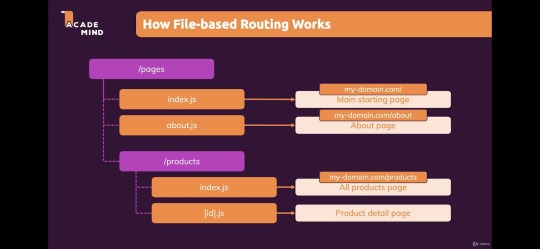
Source
React Server Components (RSC)- it allows developers to render some parts of the app on the server and send only the required HTML to the client. This results in faster page loads and better SEO, as the server can handle complex logic. Server components allow for a more optimized rendering process, minimizing the amount of JavaScript sent to the client.
Automatic code splitting- Next.js automatically splits your code into smaller parts, so only the necessary CSS and JavaScript files are loaded for each page. This makes the files smaller and helps the page load faster. As a result, developers can build fast and efficient web apps with Next.js.
Edge Functions & Middleware- Edge Functions are small, fast-running server-side functions deployed closer to the user on the edge network, improving performance, especially for globally distributed applications. Middleware runs on the edgel, allowing developers to handle tasks like authentication, redirects, and A/B testing with low latency.

Source
Image Optimization Enhancements- it automatically optimizes images based on the user's device and network conditions. The latest updates have improved performance and flexibility in how images are handled, with automatic WebP conversion and better support for blur-up effects.
Hybrid Rendering- With Next.js, developers can use different types of rendering approaches- SSR (server-side rendering), SSG (static site generation), and CSR (client-side rendering) within a single app for optimizing performance, SEO, and user experience.
API Routes- Next.js allows you to create backend API endpoints directly within the project, enabling full-stack development without needing a separate server. This makes building complex applications easier by simplifying data fetching, processing, and handling.
Better SEO and Head Management- Head Management improvements in Next.js allow developers to control meta tags, titles, and other important SEO elements more efficiently. This helps in improving SEO by making the meta tags dynamic and context-specific.
Webpack 5 Support- Next.js now fully integrates Webpack 5, offering better build performance, improved caching, and support for the latest JavaScript features, resulting in faster builds and smaller bundle sizes.
Turbopack (Alpha)- Turbopack is a new bundler from the creators of Next.js, designed to replace Webpack. It's faster and more efficient, especially for large projects. Currently, in alpha, it promises significantly faster build times and hot module reloading (HMR).
Incremental Static Regeneration (ISR)- This allows developers to update static pages without rebuilding the entire app, ensuring up-to-date content without impacting the speed of static generation.
Benefits of using Next.js

Source
Improved SEO- Next.js can generate fully rendered HTML on the server using Server-Side Rendering (SSR). This means pages load faster and search engines can easily read and rank them. With Static Site Generation (SSG), pages are pre-built as static HTML during the build, making them even faster and better for SEO.
Blazing fast speed and performance- Next.js has helped streaming app Twitch to reduce its initial load time by 50%. It uses many features like SSR, SGR, and automatic code splitting to load pages quickly and offer a smooth user experience.
Accessibility- due to SSR, web apps have more accessibility. Users can use a reader screen to access the web page content easily.
Improved developer’s experience- Next.js features like a flexible and powerful routing system, an optimized build system, and a large ecosystem of resources, tools, and libraries, lead to the developer’s productivity and experience to build more robust apps.
Enhanced security- as Next.js SSG pre-generates the content and serves the static HTML file. It reduces the risk of security vulnerabilities and attacks.
Disadvantages of Next.js
Complexity- Next.js has many powerful features, but setting it up can be tricky, especially for new developers. It might take longer to get started and configure everything, which can slow down development.
Browser Compatibility- Next.js uses modern JavaScript, which may not work well with older web browsers. Developers need to make sure their app works on the browsers their users are likely to use.
Dependency on React- Next.js is built on React, so you need to understand React well to use Next.js effectively. If you're new to React, this can be challenging.
Next.js can be used to build many different types of projects, such as:
Complex Web Applications
Web Platforms
Multi-Market Solutions
Advanced eCommerce and Retail Platforms
SaaS Products
Interactive User Interfaces
This is why brands like Nike, Hulu, Binance, Twitch, TikTok, and Vercel use Next.js for better performance.
Next.js vs. Node.js: Detailed Comparision
Here is a detailed Next.js vs Node.js comparison.
1. Next.js vs Node.js performance
Web Performance is necessary to keep users engaged. About 40% of online users tend to leave a website that takes longer than three seconds to load.
Node.js is a suitable option for building fast apps as it can handle many tasks at once. It uses an event-driven system, meaning it doesn’t get “stuck” waiting for things to happen. To make your code even faster, you can write asynchronous code that lets multiple tasks run at the same time. Node.js also helps you store and retrieve data efficiently and can avoid issues like memory leaks. Tools like caching and content delivery networks (CDNs) improve load times by serving files closer to users. For high-traffic apps, load balancing spreads the work across multiple servers.
Next.js is a framework built on top of React that makes websites even faster. It has built-in tools for improving performance, like lazy loading images and loading pages in the background for smoother transitions. It also lets you control SEO elements like page metadata, helping search engines understand your content better.
For large apps, Next.js provides monitoring tools to track performance and identify issues before they cause problems. It also includes a bundle analyzer to help you reduce the size of your app and send only the necessary data to the browser. By using CDNs to serve static files, Next.js helps further speed up your site.
2. Next.js vs Node.js scalability
Scalability in web apps means making sure your app can handle many users at once without slowing down or costing too much. It’s about increasing app performance as more people use it, without using too many resources. However, scalability differs from response time—your app can handle many requests but still take longer to respond, or it can respond quickly but struggle with heavy traffic.
In Node.js, scalability challenges include serving files, scheduling tasks, and using resources effectively. To solve these:
Use a CDN (Content Delivery Network) like CloudFront to serve files faster.
For repeating tasks, use a task scheduler like Agenda.js instead of basic timers.
Use Node.js clustering to divide the work between multiple processes, improving performance without overloading.
For Next.js, scalability is achieved by:
Caching: Use CDNs for static content, server-side caching for dynamic content, and client-side caching for API calls.
Load Balancing: Spread user traffic across multiple servers to avoid overloading.
Optimizing Databases: Use techniques like indexing, query optimization, and caching to reduce database load.
Auto-Scaling: Set up your app to automatically add or remove server instances based on traffic or usage.
3. Node.js vs Next.js: Development Speed
Node.js provides a basic platform to build server-side applications using JavaScript. You have to set up a lot of things manually, like routing, handling requests, and serving static files. This means you have more flexibility, but takes more time to set up and develop the app from scratch.
Next.js: It is a framework built on top of Node.js and React. It offers many built-in features like server-side rendering (SSR), static site generation (SSG), routing, and image optimization. These features make development faster because a lot of common tasks are already handled for you. You don’t have to set up everything from scratch, so you can focus more on building the app itself.
Next.js is faster for development because it provides ready-made tools and features, while Node.js gives you more flexibility but requires more setup.
4. Node.js or Next.js for frontend
Node.js: Node.js is mainly used for backend development, meaning it runs on the server to handle things like saving data to a database, managing user logins, and processing API requests. While it can be used to build parts of the front end (like rendering web pages on the server), it's not specifically designed for that purpose.
Next.js: Next.js is a framework built on top of React and is specifically designed for front-end development. It helps you build fast websites with features like server-side rendering (SSR) and static site generation (SSG). These features make websites faster and better for SEO (search engine optimization). Next.js also makes it easier to manage routing (pages) and other common frontend tasks.
If you're building a website's frontend (what users see and interact with), Next.js is the better choice because it’s made for that. Node.js is mostly for backend work, but it can help with some frontend tasks if needed.
5. Routing
Routing is like a map for your website. When a user asks for a specific page (like by typing a URL), routing decides where the request should go and what should be shown in response. It helps direct the user's request to the right place in your application.
There are two main ways to handle routing in Node.js: with a framework or without one.
With a Framework (like Express.js): Express is the most popular framework in Node.js for routing. It makes things easier by giving you a set of tools to handle routing quickly. You can use methods to define routes (like /home or /about), and each route can have a function that runs when someone visits that page. For example, if someone goes to /home, the app will show the homepage content.
Without a Framework: If you don't use a framework, you have to build your own server and routing system. You'll manually handle the URLs and decide what happens when a user visits different pages.
Next.js Routing: In Next.js, routing is simpler. It uses a file-based routing system. This means that every file you put in the pages folder automatically becomes a route. For example, if you create a file called about.js, Next.js will automatically link it to /about on your website. This system also handles dynamic pages, where parts of the URL can change based on data, like showing a user’s profile page based on their ID.
6. Developers experience
Developer experience (DX) is about how easy and enjoyable it is for developers to work with tools and technologies. If tools are good, developers can build things faster and with fewer problems.
Node.js and Next.js both focus on improving the developer experience in different ways:
Node.js: Node.js lets developers create anything they need, but it can be a bit complex at first. It has NPM, a huge library of tools and packages, making it easy to find solutions for problems. While it’s flexible, beginners might find it tricky until they get used to it.
Next.js: Next.js is simpler and more ready-to-use. It helps build fast websites with features like SEO-friendly pages and easy routing. It does a lot of the work for you, so you don’t have to set things up manually. It’s great for developers who want to build apps quickly without dealing with too many details.
When to Use: Next.js vs. Node.js
Use Next.js when:
E-commerce Websites: Real-time updates, fast performance, and SEO optimization.
Marketing Websites: Highly optimized for fast loading and SEO to attract visitors.
Portfolio Sites: Ideal for showcasing projects and personal portfolios with great performance.
Blogs: Use for content-heavy websites with SEO and fast page loads.
Entertainment & News Apps: Perfect for media-heavy applications with incremental static generation.
Community-driven Websites: Platforms with user-generated content (e.g., forums, social media).
Booking Apps: Websites that require fast interactions and real-time data updates.
Documentation Sites: Ideal for creating fast, SEO-friendly, and easy-to-update documentation.
Information Hubs: Centralized websites for information aggregation and display.
Auction Sites: Real-time data and quick updates, perfect for online auctions.
Minimum Viable Products (MVPs): Quickly build and deploy scalable MVPs with Next.js.
SaaS Platforms: Create fast, scalable, and SEO-friendly SaaS products.
Data Dashboards: Build real-time, data-driven dashboards with fast performance.
Web Portals: For user management, data access, and real-time updates.
Progressive Web Apps (PWAs): Build fast, offline-capable applications for mobile and desktop.
Use Node.js when:
Backend Services: Build and manage server-side applications, APIs, and databases.
Microservices: Create modular and scalable backend architectures for large applications.
APIs: Develop robust RESTful or GraphQL APIs for web and mobile apps.
Real-time Applications: Ideal for building collaborative platforms (e.g., Google Docs), message applications, streaming services, and online gaming apps.
Big Data Analytics: Handle large-scale data processing and analysis.
Wireless Connectivity: Power IoT devices and manage communication with wireless systems.
Web Scraping: Extract data from websites for analytics or aggregation.
Command Line Tools: Create custom CLI tools for automating tasks.
Single-Page Applications (SPA): Build fast and dynamic SPAs using Node.js for backend services.
Internet of Things (IoT): Use Node.js to connect and manage IoT devices and sensors efficiently.
Conclusion
As highlighted earlier, both Node.js and Next.js bring distinct advantages to web development. Next.js, built on React, stands out as a powerful alternative to Node.js for developing fast, dynamic applications. It offers a complete toolset with easy setup, routing, and an enhanced developer experience.
In contrast, Node.js serves as a runtime environment designed for building scalable, real-time applications using an event-driven, non-blocking model. When used together, Node.js and Next.js enable the creation of full-stack web applications, with JavaScript at the heart of the development process.
The choice is completely requirement-based. To build powerful Node.js web applications, connect with a leading app development company. OnGraph sets out to deliver advanced solutions by staying ahead of trends to meet modern-age requirements.
Connect with our experts to make highly performance web apps.
Content Source URL: Check Here
#Next.jsvsNode.js#Node.jsvsNext.jsperformance#Next.jscomparisonwithNode.js#Whichisbetter#Next.jsorNodeJS?#DoesNext.jsreplaceNodeJS?#Isnext.jsfrontendorbackend?#WillNodeJSbediscontinued?
0 notes
Text
Node Fullstack
Develop the full stack implementation of the solution using Node and React JS (Javascript) capabilities Prototype, design, implement and deploy the entire solution for the next generation Universal IoT gateway solution that is going to be used across all analyzers of Beckman CoulterThe essential requirements of the job include: Developing and maintaining robust and scalable applications using…
0 notes
Text
The Scaling with Node js
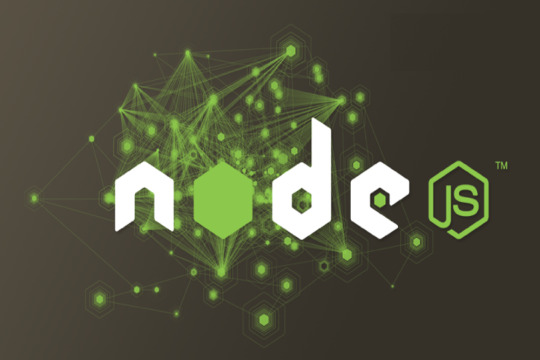
In this article, we will discuss the effective scaling practices of developing Node.js web applications. Most Developers are familiar with the Node.js implementation and we will focus on some advanced tactics to scale per the number of users.
Node.js
Node.js is a JavaScript run-time environment built on Chrome’s V8 JavaScript engine; it implements the reactor pattern, a non-blocking, event-driven I/O paradigm. Node.js is well good for building fast, scalable network applications, as it’s capable of handling a huge number of simultaneous requests with high throughput.
The way to improve the scalability
Before entering into the concept, let’s know what is Scalable? A word Scalable refers to expandable, which means the number of users will access the application from anywhere at the same time. Ensure your application is highly scalable; it can handle a large increase in users, workload or transactions without undue strain.
Regarding increasing the scalable, we are going to explain the options for concurrent users.
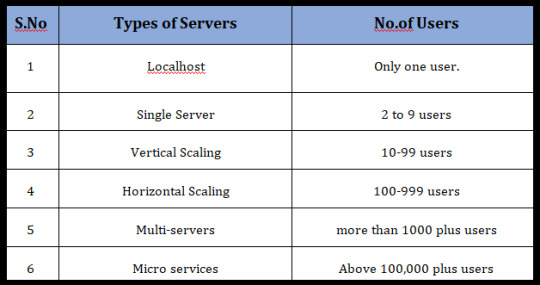
1. Localhost
Any application that runs on a developer machine for development purpose is hosting application locally. Generally, it is for the use of only one user, so there is no need to worry about scaling factor.
2. Single server
A single server system can accommodate around 1 to 9 concurrent users. Assume, your application will be used locally then the deployment will be carried out locally. It’s fine to do in a single server. For hosting the node.js application one can use Nginx as the webserver.
If you are using a single server application for few users well enough. It is simple to implement the single server and very much efficient for a few users. The requirements consist of only one CPU and 1 GB RAM, which is equivalent to web server AWS t2.micro / t2.nano.
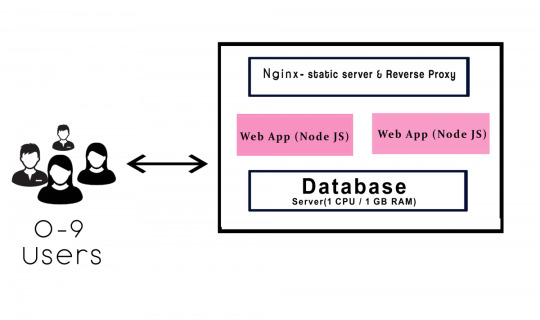
3. Vertical scaling
The term “vertical” states that to manage by adding extra capability or power to a single component. When the server begins to start slower or longer time to execute at the level we will transform to the vertical scaling. In vertical scaling the requirements consist of 4 GB RAM, which is equivalent to web service t2. medium.
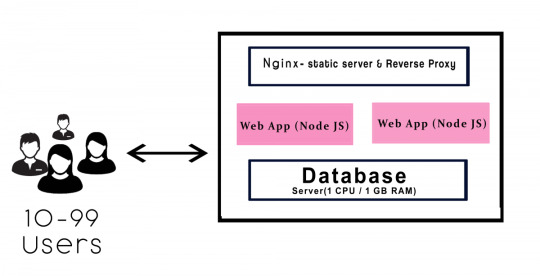
The above diagram explains the workflow in the vertical scaling.
a. It consists of two instances of Node.js which runs to deploy/update within zero downtime.
b. The function of Nginx handles the load balance.
c. If server 1 works to upgrade, then the other server keeps serving the requests. Continue this process until the buffer will get empty.
d. The purpose in Nginx takes into account of all the user requests, It consists of two functions such as a static file server and reverses proxy.
Static — The static files like CSS, JS, Images, this will not disturb the web app.
Reverse Proxy — It will access the request for the needs the application to resolve which redirects it.
4. Horizontal scaling
The Scaling horizontally, which means adding more machines to scale up your pool of resources. This concept will work out in the enterprise from the level of 100 to 1000 employees. Whenever the app responses get slowdown from the database you have to upgrade to 16 GB RAM. Cassandra, MongoDB is suitable for horizontal scaling. It provides for implementing a scale from smaller to a bigger machine.
Companies like Google, Facebook, eBay and Amazon are using horizontal scaling.
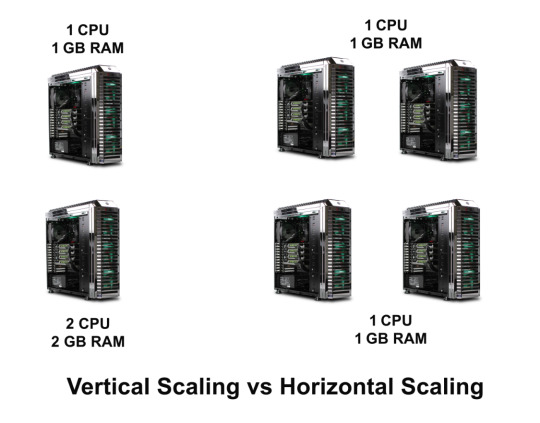
Differences
In horizontal scaling, you can add more machines to scale dynamically. If any system fails, then another system will handle the process. No worry about the process failing. It will bring high I/O concurrency, reducing the load on existing nodes and improve disk capacity.
In vertical scaling, the data resides on a single node, it gets easy to slow down when the load increases. If the system fails to process, then the whole system may get a collapse. Horizontal scaling is little bit cost-effective than the vertical scaling.
5. Multi-servers
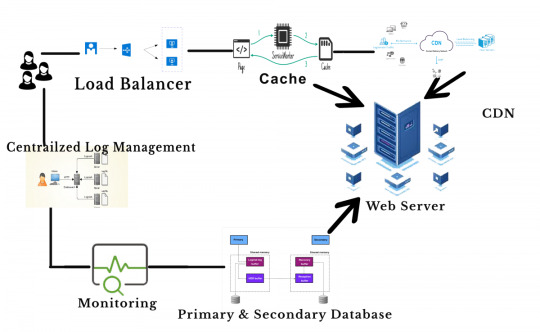
As the business grows, it’s time to add more servers to host the node.js application. The capacity of multi-servers can accommodate above 1000’s of concurrent users. Are you like to transform the previous server to the multi-servers? If Yes, continue with the following steps
1. First, add a load balancer and app units.
2. Set up multiple availability zones (AZ) in a region which one is connected through low latency links.
3. By splitting up the static files for easier maintenance.
4. CDN is one of the servers, which is used to manage files like images, videos, CSS, JS etc.,
Amazon provides load balancing through Elastic Load Balancer (ELB). It is available for the entire availability zone. This service routes to the active host only and can able to manage 1000 instances. By this set up you can use horizontally either vertically.
6. Microservices
Most of the giant companies like Netflix, Uber, Amazon are using microservices. The goals of microservice are to separate the services like search, build, configure and other management functionalities from database instances and deploy them as a separate microservices. Each of these services will take care of their tasks and can communicate with other services via API.
Traditionally we use the monolithic database. In monolithic, we can’t extend our application for several users. All modules are composed together in a single piece. As your business growing up, you have to move on the microservices. This will take to the next level in your production.
Conclusion
Hope this article helped you with scalability issues and helped you understand a bit better of how you can use the available services perfectly.
0 notes
Text
Top Skills You Will Learn in a Full Stack Development Course
I found out that joining a Full Stack Development course is such a powerful experience that prepares you for the real-world needs of a new web developer. Here’s a glimpse into the top skills you'll master
Here’s a glimpse into the top skills you'll master:
Front-End Technologies: Develop knowledge in solving interactive HTML5, CSS, and JavaScript problems and design aesthetically-appealing interfaces. Some frameworks which are useful in the creation of dynamic web applications include the React or Angular.
Back-End Development: Get to know about server-side languages including Node. js, Python, or Java. Become a proficient user of SQL or NoSQL databases and gain the knowledge on designing and implementing APIs that can ensure smooth data exchange.
Version Control: Develop mastery at Git and GitHub, important tools for managing changes, working with teams and versions of the code.
Deployment and DevOps: Discover how to deploy your application to cloud services via either AWS or Heroku. Acquaint yourself with hardware virtualization tools such as Docker and familiarize yourself with Continuous integration and Continuous delivery.
Responsive Design: Specify techniques to construct application’s functionality across various forms of devices, including desktops computers, tablets, and mobile applications.
A Full Stack Development course enables you acquire such crucial skills to help one find a good job in the everchanging world of technology.
1 note
·
View note
Text
Best IT Courses in Nagpur at Eliora Techno Unlock Your Career Potential
In today’s digital age, a strong foundation in IT (Information Technology) is crucial for career growth. Whether you're a beginner looking to dive into the IT world or a professional aiming to upgrade your skills, finding the right course can be overwhelming. Fortunately, Eliora Techno in Nagpur offers some of the best IT courses, tailored to meet industry standards and equip you with skills that are in demand.

Why Choose Eliora Techno in Nagpur?
Located in the heart of Nagpur, Eliora Techno has built a reputation for offering top-tier IT training programs that cater to beginners, intermediates, and professionals. The institute focuses on practical, hands-on learning, ensuring that students not only understand the theory behind various technologies but also know how to implement them in real-world situations. With experienced trainers, a student-centric approach, and a state-of-the-art infrastructure, Eliora Techno is a top choice for aspiring IT professionals.
Let’s dive into the top IT courses offered at Eliora Techno in Nagpur:
1. Full Stack Development (MERN Stack)
For those looking to become versatile developers, Full Stack Development is the perfect course. At Eliora Techno, you can learn both MERN (MongoDB, Express, React, Node.js) and MEAN (MongoDB, Express, Angular, Node.js) stacks, which are popular in building robust web applications.
- Key Highlights:
- Learn both front-end and back-end technologies.
- Work on real-time projects.
- Gain expertise in databases like MongoDB.
- Master JavaScript frameworks such as React and Angular.
Full Stack Development is in high demand across the globe, and mastering it can open doors to various opportunities in top IT firms.
2. Java Development
Java remains one of the most popular programming languages globally. Eliora Techno offers a comprehensive Java Developer course that covers everything from the basics to advanced Java concepts.
- Key Highlights:
- Object-oriented programming (OOP) with Java.
- Hands-on training in frameworks like Spring and Hibernate.
- Real-time projects that simulate professional environments.
Whether you're looking to build Android apps, web applications, or software solutions, Java is an essential skill in the developer toolkit.
3. Digital Marketing
The IT industry isn’t just about coding. Digital marketing has become an indispensable skill for anyone looking to grow in the online space. Eliora Techno offers an all-encompassing Digital Marketing course that covers SEO, SEM, SMM, content marketing, email marketing, and more.
- Key Highlights:
- Understand the nuances of SEO to boost organic traffic.
- Learn how to run paid campaigns on Google Ads and social media.
- Master the art of content creation and optimization.
- Work with real businesses to develop marketing strategies.
For anyone who wants to specialize in online marketing, this course is an ideal way to enter the fast-paced world of digital marketing.
4. PHP Full Stack Developer
PHP continues to be one of the leading programming languages in web development. Eliora Techno’s PHP Full Stack Developer course is tailored for those who want to build dynamic websites and web applications.
- Key Highlights:
- Comprehensive coverage of front-end technologies like HTML, CSS, and JavaScript.
- Learn back-end development using PHP and MySQL.
- Develop and deploy live projects.
This course is perfect for aspiring web developers looking to specialize in open-source technologies.
5. React JS and Node JS
React JS and Node JS are two of the most popular JavaScript frameworks, particularly for building fast, scalable applications. Eliora Techno offers in-depth courses on both technologies, teaching students how to create high-performance applications.
- Key Highlights:
- Build dynamic user interfaces with React JS.
- Learn how to handle back-end operations using Node JS.
- Understand how to work with APIs and databases.
With the growing demand for React and Node developers, this course is highly recommended for those who want to specialize in modern web development.
6. Graphic Designing
Graphic design is another field within the IT industry that’s growing rapidly. Eliora Techno offers a comprehensive Graphic Design course that teaches students how to create visually stunning graphics using tools like Adobe Photoshop, Illustrator, and InDesign.
- Key Highlights:
- Learn the basics of design principles.
- Master tools like Photoshop and Illustrator.
- Work on real-world projects such as logos, brochures, and websites.
This course is perfect for creative minds looking to enter the world of digital art and design.
Why Eliora Techno Stands Out
Eliora Techno doesn’t just offer IT courses, it provides a holistic learning environment. Students are mentored by industry experts, work on live projects, and receive 100% placement assistance upon course completion. The institute's focus on practical knowledge, real-world experience, and job-readiness ensures that its students are industry-ready.
Moreover, Eliora Techno’s partnership with top IT companies in Nagpur and across India means that students have excellent job prospects upon course completion.
Conclusion
Whether you want to become a full-stack developer, digital marketer, graphic designer, or specialize in any IT field, Eliora Techno offers the best IT courses in Nagpur to kickstart or advance your career. With its practical, hands-on approach and expert faculty, Eliora Techno is the perfect place to acquire industry-relevant skills and achieve your career goals. Don’t wait—start your journey to a brighter future with Eliora Techno today!
#onlinelearningeducation#educationonlinelearning#distanceeducationonlinelearning#onlineclassesmachinelearningcourse#onlinelearningplatforms#onlineeducation#coursesonline#besthronlineclassesinnagpur#tophrclasses
0 notes
Text
Ton blockchain development guide
Blockchain is a type of technology that promotes adequate record keeping and documentation in a decentralized, transparent, and unalterable, if not tamper free, manner. Typical technologies that are based on a central system do not have this feature since the use of several nodes that validate transactions based on principals known as consensus mechanisms is employed. It is also important to mention other characteristics such as immutability, cryptographic security and decentralization, which are the reasons why such technology can be incorporated in many sectors including but not limited to finance, supply chain management, healthcare etc.
In particular, Ton Blockchain Development has been in high demand because of its growing performance with regard to speed and scalability; thus, presenting a new shift in the development foundations of blockchain applications. More specifically, blockchains may either be public (to which everyone has access), private (which are limited in access), or hybrid (which incorporates both public and private access).
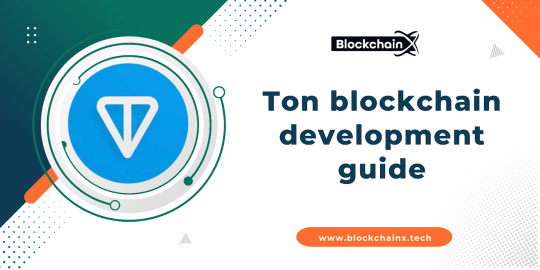
Foundational Concepts
Engaging in blockchain development requires an understanding of blocks, transactions, nodes and miners whose roles are to keep and manage the operations in the chain, and validate the entries on the created ledger. The term ‘cryptography' may be simple, it`s applied for security purposes by use of public and private keys, along with hashing. To safeguard vehicle damage in case of an accident, insurors usually put systems in place or make use of techniques such as Pulling Damage and Loss management.
Blockchain Development Tools and Environments
For a number of blockchain projects, developers use different platforms. As expected, the most common platform alongside hyperledger for enterprise solutions and high speed operations, such as binance smart chain and solana, would be Ethereum thanks to its versatility and powerful smart contract functionality. Development frameworks such as Truffle, Hardhat and Remix offer full basing structures for the development and testing of Decentralised Applications (DApps). When it comes to programming smart contracts, Solidity – Ethereum based and Rust – Solana based, are the most common languages.
Setting Up a Development Environment
The process of developing blockchain solutions begins with the establishment of a sound environment. This often involves the downloading and installation of Node.js and package managers like NPM or Yarn. MetaMask is used to store your cryptocurrencies and enables the use of various applications built on the blockchain technology; it is a crypto wallet and dApp interface. Ganache, on the other hand, provides users with the capability to run a blockchain to create and test their applications in a simulated environment. IDEs such as Visual Studio Code, which come with additional support for coders writing smart contract languages, facilitate the writing of code and the debugging process.
Creating Your First Smart Contract
Smart contracts are programs contained within the small scripts stored on the blockchain which automatically initiate and perform actions when certain stated conditions are met. A beginner project usually consists in the design of a straightforward payload – often a token creation – using a programming language called Solidity. Using tools such as Remix in this scenario, one can write, compile and deploy their contract, before users can interact using the web3.js or ethers.js libraries.
Blockchain Security Considerations
The importance of security in blockchain development cannot be overstated. The most common attack vectors are reentrancy, integer overflow/underflow attacks, and inadequate access control. The developers must observe some acceptable minimum standards, which include, among others, proper input cleaning and the use of current relevant security compliant libraries. Use of auditing tools like Mythril and automated analysis helps safeguard the integrity of the contracts drafted before they are deployed.
Decentralized Applications (dApps)
Decentralized applications integrate, on the back end, smart contracts with a user-facing front end. Although similar to traditional apps, they are based on distributed networks. Typically, the developers use JavaScript libraries, for instance, web3.js, to enable interaction between the front end and the blockchain functions. Creating dApps may involve developing a distributed e-commerce platform, where transactions are carried out using smart contracts without the need of third-party intermediaries.
Deploying on Public Testnets/Mainnets
In particular, one shouldn't rush to introduce a blockchain project based on Mainnets (for example, Ethereum) before going through public testnets like Rinkeby or Ropsten. These are said to be the test nets that do not carry any risk but reproduce the working environment in the mainnet to the exact shade. It is here that the developers place contracts, work on their relationships, and fine-tune the gas prices.
Exploring New Trends
The world of Blockchain is ever-changing and dynamic, hence the innovations we see such as NFTs (Non-Fungible Tokens) that make digital Arts more marketable than ever, DeFi (Decentralized Finance) platforms that operate contrary to the pre-existing financial system, and Layer-2 scaling solutions such as Polygon that make transactions faster. Another up-and-coming broad area within Blockchain technologies has to do with designs and implementations of cross-chain interoperability solutions including bridges between chains.
Resources and Communities for Further Learning
There are a lot of educational prospects present in the blockchain domain. The developers can use the help of online resources, stack exchange, git hubs, specific courses and certifications on blockchain technology. Development is equally encouraged by communities and meetups, where one meets and networks with relevant people in the industry.
Conclusion
The demand for blockchain technologies and consequently for blockchain developers is on the rise nowadays. It could be as simple as knowing the principles of decentralization and cryptography or developing and deploying dApps. The path entails utilizing several tools, languages, and security techniques. The multifaceted nature, be it smart contracts, nfts platforms, or DeFi allows developers to venture into thrilling areas and come up with solutions. As the situation goes on changing with innovations coming in the market, up to date with such changes relevance to your work, participating in the relevant community and seeking for improvement would be necessary aspects of this line of work. Finally, if it seems such expert assistance would be helpful, feel free to cooperate with a Ton Blockchain Development Company in order to receive specialized assistance crucial for effective and solid development of solutions on the Ton blockchain. Blockchain does not only present an avenue for decentralized applications. It also maintains the potential to serve as a disruptive platform for the coming generations.
0 notes
Text
Why Choose Solana for Token Creation?

In the fast-evolving world of blockchain technology, choosing the right platform for token creation is crucial for the success of any project. Among the myriad of blockchain platforms available, Solana has emerged as a leading choice for developers and businesses. This article delves into the reasons why Solana stands out as an ideal platform for token creation, exploring its unique features, advantages, and potential applications.
1. High Throughput and Scalability
One of Solana's most significant advantages is its high throughput, capable of processing over 65,000 transactions per second (TPS). This impressive performance is achieved through a unique combination of technologies:
Proof of History (PoH): This innovative consensus mechanism allows Solana to order transactions efficiently without the need for extensive communication between nodes.
Tower BFT: A variant of Practical Byzantine Fault Tolerance (PBFT), Tower BFT ensures the security and reliability of the network.
Turbine: A block propagation protocol that breaks data into smaller packets, enabling faster transmission across the network.
These technologies collectively enhance Solana's scalability, making it an ideal platform for projects requiring high transaction speeds and large user bases.
2. Low Transaction Costs
Transaction fees on Solana are exceptionally low, often costing less than a cent. This cost-efficiency is a crucial factor for developers and users, particularly for projects involving microtransactions, high-frequency trading, or decentralized applications (dApps) with a large number of transactions. Low fees also make Solana more accessible to a broader audience, fostering greater adoption and participation in the network.
3. Robust Security
Solana prioritizes security through its decentralized architecture and consensus mechanisms. The combination of PoH and Tower BFT ensures that the network can resist various attack vectors, including Sybil attacks and double-spending. Additionally, Solana's rapid transaction processing and finality reduce the time window for potential attacks, further enhancing the security of the platform.
4. Developer-Friendly Ecosystem
Solana offers a comprehensive suite of tools and resources for developers, making it easier to create, deploy, and manage tokens and dApps. Key components of Solana's developer ecosystem include:
Solana SDKs: Software development kits for various programming languages, including Rust, C, and C++.
CLI Tools: Command-line interface tools for interacting with the Solana network, managing accounts, and deploying smart contracts.
Solana Web3.js: A JavaScript library for integrating Solana with web applications.
Comprehensive Documentation: Extensive and well-organized documentation, tutorials, and guides to help developers get started and troubleshoot issues.
This developer-friendly environment accelerates the development process and reduces the learning curve for new entrants to the ecosystem.
5. Interoperability and Ecosystem Integration
Solana is designed to be interoperable with other blockchain networks and ecosystems, enhancing its utility and reach. Through initiatives like Wormhole, a bi-directional bridge between Solana and other major blockchains (e.g., Ethereum, Binance Smart Chain), developers can create cross-chain applications and assets. This interoperability facilitates asset transfers and liquidity between different platforms, enabling more complex and innovative use cases.
6. Vibrant and Growing Community
The Solana community is one of the most active and rapidly growing in the blockchain space. This vibrant community contributes to the platform's development, offers support to new developers, and fosters collaboration on various projects. Regular hackathons, meetups, and community events further strengthen the network and provide opportunities for developers to showcase their work and connect with like-minded individuals.
7. Real-World Use Cases and Adoption
Solana's robust features and advantages have attracted numerous high-profile projects and partners, demonstrating its real-world applicability and potential. Some notable examples include:
Serum: A decentralized exchange (DEX) built on Solana, known for its high speed and low transaction costs.
Audius: A decentralized music streaming service that migrated to Solana to leverage its scalability and performance.
Star Atlas: A blockchain-based space exploration game utilizing Solana's high throughput for seamless in-game transactions and interactions.
These successful implementations highlight Solana's capability to support diverse and demanding applications across various industries.
8. Future-Proof Infrastructure
Solana's commitment to continuous improvement and innovation ensures that it remains at the forefront of blockchain technology. The platform's development roadmap includes plans for further scalability enhancements, new features, and integrations with emerging technologies. This forward-thinking approach makes Solana a future-proof choice for developers looking to build long-lasting and adaptable solutions.
9. Strong Financial Backing and Strategic Partnerships
Solana has received significant financial backing from prominent investors, including Andreessen Horowitz, Polychain Capital, and Alameda Research. This financial support provides stability and resources for ongoing development and expansion. Additionally, strategic partnerships with major players in the blockchain and tech industries further enhance Solana's credibility and reach.
10. Commitment to Decentralization
Despite its high performance, Solana remains committed to maintaining a decentralized network. The platform's consensus mechanisms and architecture ensure that control is distributed among a wide array of validators, preventing centralization and preserving the core principles of blockchain technology.
Conclusion
Solana's high throughput, low transaction costs, robust security, developer-friendly ecosystem, interoperability, and growing community make it an exceptional platform for token creation. Its real-world use cases, future-proof infrastructure, strong financial backing, and commitment to decentralization further solidify its position as a leading blockchain platform.
For developers and businesses looking to create and deploy tokens, Solana offers a compelling combination of performance, scalability, and support. As the blockchain space continues to evolve, Solana is well-positioned to play a crucial role in shaping the future of decentralized technology and digital assets.
0 notes
Text
Exploring the Best Web3 Development Tools in 2024

We live in a world that is constantly changing with the development of the Internet. As we enter 2024, Web3 technologies are taking the world by storm, creating a new era of decentralized, transparent, and empowered user experiences.
Web3, sometimes referred to as the “decentralized web,” is a new way of building applications based on blockchain, smart contracts, and decentralized protocols. Web3 provides a framework for building applications focused on security, privacy, and peer-to-peer communication.
Web3 developers leverage a variety of innovative tools to build sophisticated Web3 solutions.
These solutions redefine the digital experience, In this blog post, we'll delve into some of the best Web3 development tools driving the evolution of decentralized applications (DApps).
.
1. Ethereum Development Frameworks:
Ethereum is still one of the best platforms for building decentralized applications. Ethereum development frameworks like Truffle and Hearted, as well as Embark, simplify the development process. These frameworks provide the necessary tools to compile smart contracts, test them, and deploy them. These frameworks provide a powerful development environment, allowing developers to write smart contracts efficiently and securely while ensuring smooth integration into the Ethereum blockchain.
.
2. IPFS:
What is IPFS? The Internet Protocol File System (IPFS) is a distributed protocol for storing and sharing content on the Internet. It stores data across a distributed network of nodes, unlike traditional web hosting solutions that store data on a single server. This makes it easier for developers to host static files and websites, as well as decentralized applications.
IPFS is also more resistant to censorship than traditional web hosting solutions.
.
3. Solidity Smart Contract Development Tools:
Solidity is the most popular programming language for building smart contracts on Ethereum. Solidity development tools such as the Remix IDE, the Etherlime IDE, and the Hardhat IDE are designed to make Solidity development easier and faster. These tools provide powerful features like code debugging and gas optimization, as well as automated testing. Solidity allows developers to write smart contracts securely and efficiently, which makes it easier to integrate blockchain logic in decentralized applications.
.
4. Web3.js and Ethers.js:
Ethers.js and Web3.js are two JavaScript libraries that allow you to interact with Ethereum and other blockchains that are compatible with Web3. They provide a wide range of features, such as account administration, transaction signing, smart contract interactions, etc. By embedding these libraries into your applications, you can enable smooth communication with blockchain networks and unlock the potential of decentralized technologies.
.
5. Blockchain Development Platforms:
Blockchain development platforms such as Hyperledger Fabric, Corda, and Binance Smart Chain provide comprehensive tools for building and deploying enterprise-grade blockchain solutions. These platforms offer modular architecture, consensus mechanisms, and interoperable features, catering to a variety of use cases ranging from supply chain management to decentralized finance (DeFi). By leveraging the capabilities of blockchain development platforms, companies can drive innovation and transform their business processes in the Web3 era.
.
Best Web3 Development Company:
As the demand for Web3 solutions continues to soar, businesses and organizations are seeking experienced partners to navigate the complexities of decentralized development. One such standout company leading the charge in Web3 development is Justtry Tech, a premier Web3 Development Company. With a proven track record of delivering cutting-edge blockchain solutions, Justtry Tech combines technical expertise with industry insights to help clients harness the power of decentralization. From concept ideation to product deployment, Justtry Tech offers end-to-end services tailored to the unique needs of each project, ensuring unparalleled quality and innovation in the rapidly evolving Web3 landscape. Whether you're venturing into decentralized finance, non-fungible tokens (NFTs), or decentralized autonomous organizations (DAOs), Justtry Tech is your trusted partner for navigating the exciting world of Web3 development.
.
In conclusion, Web3 development tools are evolving at a rapid pace, allowing developers to create cutting-edge decentralized applications quickly and easily. Whether you’re an experienced blockchain developer or just starting, having the right tools in your toolbox is essential to unlock the full potential of web3 technologies. By adopting cutting-edge tools and frameworks, you can be part of the ongoing revolution of decentralized finance, digital identities, and decentralized governance that will shape the future of the Internet.
#Web3#Web3 Development Company#Web3 Gaming#Web3 Smart Contract#Web3 Development#crypto#blockchain#nft#cryptocurrency#cryptoexchange#bitcoin#etherum#artificial intelligence
0 notes
Text
Empower Your Digital Transformation with Microsoft Azure Cloud Service
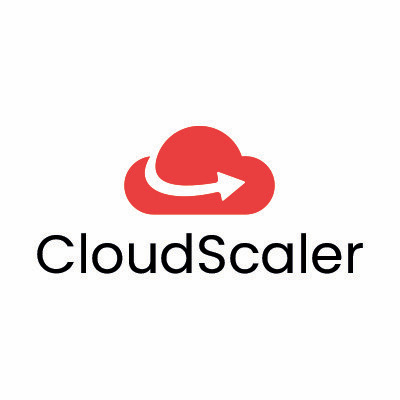
Today, cloud computing applications and platforms are promptly growing across various industries, allowing businesses to become more efficient, effective, and competitive. In fact, these days, over 77% of businesses have some part of their computing infrastructure in the cloud.
Although, there are various cloud computing platforms available, one of the few platforms that lead the cloud computing industry is Microsoft Azure Cloud. Although, Amazon Web Services (AWS) is a leading giant in the public cloud market, Azure is the most rapidly-growing and second-largest in the world of computing.
What is Microsoft Azure?
Azure is a cloud computing service provided by Microsoft. There are more than six hundred services that come under the Azure umbrella. In simple terms, it is a web-based platform used for building, testing, managing and deploying applications and services.
About 80% of Fortune 500 Companies are using Azure for their cloud computing requirements.
Azure supports a multitude of programming languages, including Node JS, Java and C#.
Another interesting fact about Azure is that it has nearly 42 data centers around the globe, which is the maximum number of data centers for any cloud platform.
A broad range of Microsoft’s Software-as-a-Service (SaaS), Platform-as-a-Service (PaaS) and Infrastructure-as-a-Service (IaaS) products are hosted on Azure. To understand these major cloud computing service models in detail, check out our other blog.
Azure provides three key aspects of functionality: Virtual Machine, app services and cloud services.
Virtual Machines
The virtual machines by Azure are one of many types of scalable, on-demand computing resources. An Azure virtual machine provides you with the flexibility of virtualization without the need of buying and maintaining the physical hardware that runs it.
App Services
Azure App Services is a service based on HTTP which is used for hosting web applications, mobile back ends, and REST APIs. It can be developed in your favourite language, be it JAVA, .NET, .NET Core, Node.js, Ruby, PHP or Python. Applications smoothly run and scale on both Windows and Linux-based environments.
Cloud Services
Azure Cloud Services is a form of Platform-as-a-Service. Similar to Azure App Service, the technology is crafted to support applications that are reliable, scalable, and reasonable to operate. Like App Services are hosted on virtual machines, so do Azure Cloud Services.
Various Azure services and how it works
Azure offers over 200 services, divided across 18 categories. These categories constitute computing, storage, networking, IoT, mobile, migration, containers, analytics, artificial intelligence and other machine learning, management tools, integration, security, developer tools, databases, security, DevOps, media identity and web services. Below, we have broken down some of these important Azure services based on their category:
Computer services
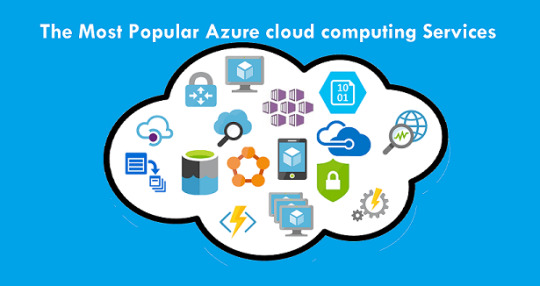
Azure Cloud Service: You can create measurable applications within the cloud by using this service. It offers instant access to the latest services and technologies required in the enterprise, enabling Azure cloud engineers to execute complex solutions seamlessly.
Virtual Machines: They offer Infrastructure-as-a-Service and can be used in diverse ways. When there is a need for complete control over an operating system and environment, VMS are a suitable choice. With this service, you can create a virtual machine in Linux, Windows or any other configuration in seconds.
Service Fabric: It is a Platform-as-a-Service which is designed to facilitate the development, deployment and management of highly customizable and scalable applications for the Microsoft Azure cloud platform. It simplifies the process of developing a micro service.
Functions: It enables you to build applications in any programming language. When you’re simply interested in the code that runs your service and not the underlying platform or infrastructure, functions are great.
Networking
Azure CDN: It helps store and access data on varied content locations and servers. Using Azure CDN (Content Delivery Network), you can transfer content to any person around the world.
Express Route: This service allows users to connect their on-premise network to the Microsoft Cloud or any other services using a private connection. ExpressRoute offers more reliability, consistent latencies, and faster speed than usual connections on the internet.
Virtual Network: It is a logical representation of the network in the cloud. So, by building an Azure Virtual Network, you can decide your range of private IP addresses. This service enables users to have any of the Azure services communicate with each other securely and privately.
Azure DNS: Name resolution is provided by Azure DNS, a hosting service for DNS domains that makes use of the Microsoft Azure infrastructure. You can manage your DNS records by utilising the same login information, APIs, tools, and pricing as your other Azure services if you host your domains in Azure.
Storage
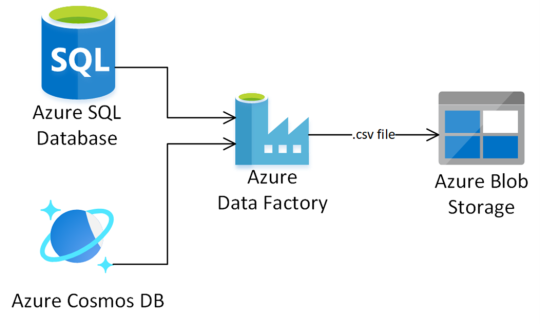
Disk Storage: In Azure, VM uses discs as a storage medium for an operating system, programs, and data. A Windows operating system disc plus a temporary disc are the minimum numbers of discs present in any virtual machine.
File Storage: The main usage of Azure file storage is to create a shared drive between two servers or users. We’ll use Azure file storage in that situation. It is possible to access this managed file storage service via the server message block (SMB) protocol.
Blob Storage: Azure blob storage is essential to the overall Microsoft Azure platform since many Azure services will store and act on data that is stored in a storage account inside the blob storage. And each blob must be kept in its own container.
Benefits of using Azure
Application development: Any web application can be created in Azure.
Testing: After the successful development of the application on the platform, it can be easily tested.
Application hosting: After the testing, you can host the application with the help of Azure.
Create virtual machines: Using Azure, virtual machines can be created in any configuration.
Integrate and sync features: Azure enables you to combine and sync directories and virtual devices
Collect and store metrics: Azure allows you to collect and store metrics, enabling you to identify what works.
Virtual hard drives: As they are extensions of virtual machines, they offer a massive amount of data storage.
Bottom line
With over 200 services and countless benefits, Microsoft Azure Cloud is certainly the most rapidly-growing cloud platform being used by organizations. Incessant innovation from Microsoft allows businesses to respond quickly to unexpected changes and new opportunities.
So, are you planning to migrate your organization’s data and workload to the cloud? At CloudScaler, get instant access to the best services and technologies from the ground up, supported by a team of experts that keep you one step ahead in the competition.
0 notes
Text
What is Express.js? A Comprehensive Guide to Beginners
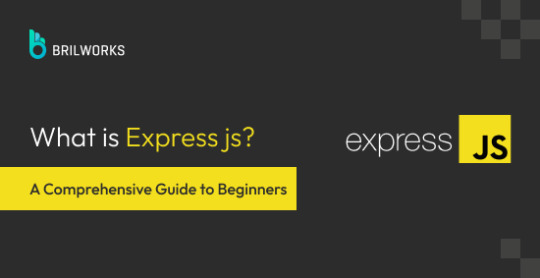
Let’s start with web development.
When we talk about web development, we are basically essentially talking about the front-end and back-end (also referred to as server-side). Express is a backend development Nodejs framework.
What is a Nodejs Framework?
This section is for those who are not familiar with frameworks. If you already know what a framework is, please feel free to skip ahead.
Writing an application from scratch is time-consuming and tedious, especially in today’s fast-paced world, and initial setup may involve a lot of boilerplate code, such as setting up ports and defining route handlers; frameworks help to save time and effort by providing a pre-built set of tools and libraries that can be used to quickly and easily create a web application. This can free up developers to focus on the things that matter most — writing logic and advanced functionalities.
What is Express js?
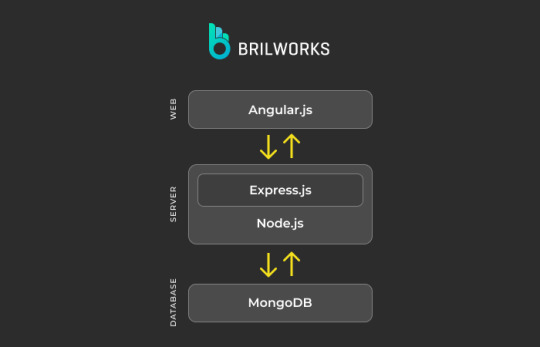
The image shows how a tech stack contributes to complete web development. For instance, when it comes to data storage, a Database (e.g., MongoDB) is required, and for writing the front end, various frameworks exist today, such as Angular.js.(in MEAN stack).
Similarly, you need to use a backend-specific language or framework for the backend. Some popular backend languages include Python, Java, JavaScript (Node.js), and PHP, while Django, Express.js, and Flask are some of the popular backend frameworks.
If you want to use JavaScript in the backend, you typically need to use the Node.js runtime environment. Node.js allows you to run JavaScript code outside of a web browser, which makes it possible to use JavaScript for both the front end and back end of a web application.
On top of Nodejs, several frameworks have been created, among which is Express. More precisely, it is a layer built around Node.js that significantly simplifies the process of working within the Node.js environment and reduces development complexity.
Express is an open-source web application framework for Node.js. It provides a robust set of features for building web and mobile applications, including routing, middleware, template engines, seamless database integration, and a wealth of features for developing advanced features and functions.
Note: In this article, when we refer to web applications with Express, we are explicitly referring to the development of “back-end services or APIs.”
Features of Express
1. An array of pre-built tools
The framework includes an array of tools for web applications, routing, and middleware for building and deploying large-scale, enterprise-ready applications.
2. Node package manager
It comes up with a Node package manager and a command-line interface(CLI), allowing you to create project structures, generate routes, controllers, and other components, as well as manage dependencies and configuration settings.
3. Middleware
Middleware in Express is used as snippets of code that intercept requests and responses, manage errors, and perform various other tasks, helping you to perform actions like validation, logging, and authentication in a reusable and modular way.
4. Routing
ExpressJS offers developers a straightforward routing system that simplifies the handling of HTTP requests. In addition, it allows you to define your own special paths and rules for these requests.
Applications of Expressjs
It is termed as a versatile framework that developers employ for constructing APIs, single page and real-time applications, microservices, proxy servers, CMSs, backend for mobile applications, authentication, authorization mechanisms, and many more services. Below is a list of the application you can build using Express js.
1. APIs for Single Page Application
Single-page applications (SPAs) are a popular type of web application that loads all of the content for the page in one go. This means that the user does not have to wait for the page to reload when they interact with it, which can provide a smoother and more responsive experience.
Some popular examples of SPAs include Gmail, Google Maps, and Spotify. These apps are able to provide a great user experience because they only need to load the content once, and then they can dynamically update the content based on the user’s actions. This makes for a very fluid and interactive experience. Express is used for developing back-end services, or APIs, for single-page applications to fetch data.
2. Real-time applications
Real-time applications are increasingly popular as they allow users to interact with each other in real time. Some popular examples of real-time applications include multiplayer games, chat apps, and collaboration tools. Express is used in developing real-time applications.
It helps you build the basic structure, like handling web pages and buttons, and when you want your website to instantly update without needing to refresh the page, Express.js and socket.io can work together.
Express.js can take care of the regular stuff your website needs, like showing pages and handling regular requests. While WebSockets enables real-time data exchange between the server and clients.
3. Streaming applications
Streaming applications are becoming increasingly popular as they allow users to watch movies, TV shows, and other content on demand. Some popular examples of streaming applications include Netflix, Hulu, and Disney+.
You can leverage Express in streaming applications for a variety of tasks, including handling requests, serving media files, developing authentication and authorization modules, implementing search and recommendations, and many more functionalities.
4. Fintech application
Some popular fintech applications that are built with Express.js include Robinhood, Coinbase, and PayPal. Leveraging the robust functionalities of Express.js, these applications efficiently manage intricate financial transactions.
5. APIs
APIs are software intermediaries that allow different systems to communicate with each other. They are widely utilized by different systems for integrating payment gateways, social media integrations, and e-commerce integrations. Brillworks has developed a suite of APIs and applications for the business consulting and media preservation industries, which includes critical functions such as company setup, visa services, corporate services, file management, customer portal, CMS portal, bulk upload, etc.
Read more: https://www.brilworks.com/blog/what-is-express-js-comprehensive-guide-to-beginners/
0 notes